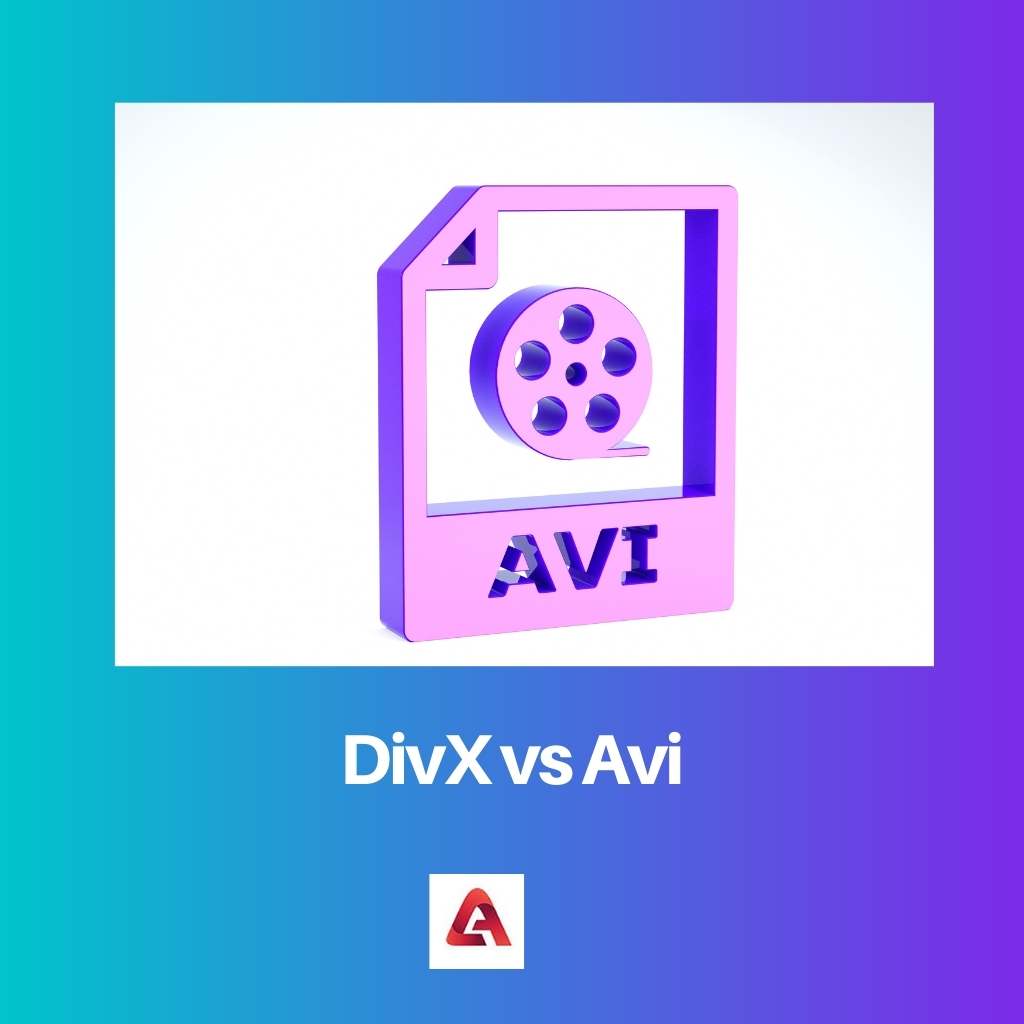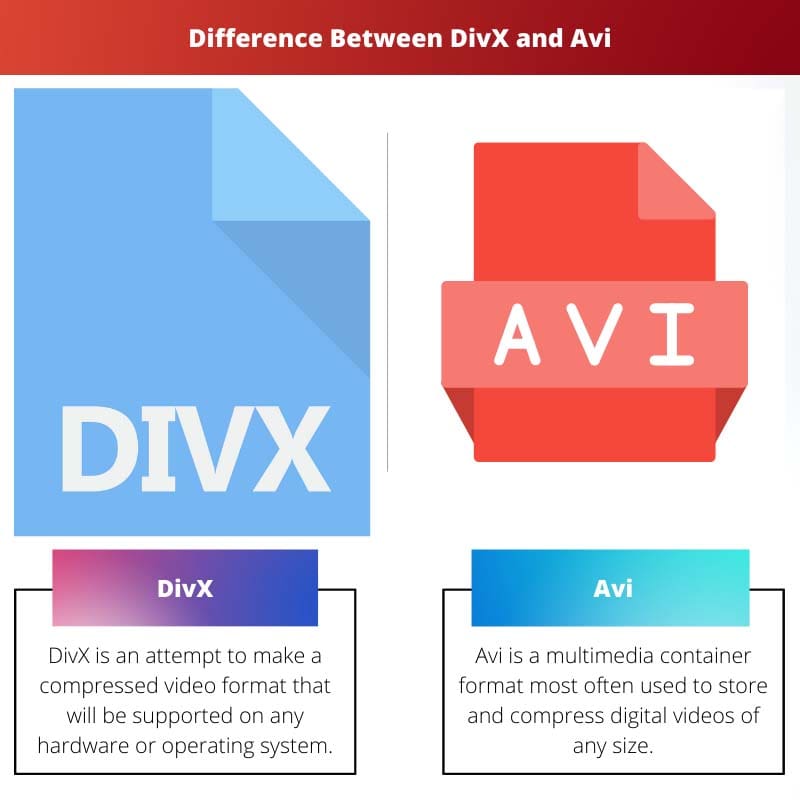DivX is a video codec from DivX, Inc. developing high-quality video codecs and related software to deliver improved audio and video quality to entertainment content. Avi is a multimedia container format most used to store digital videos.
Key Takeaways
- DivX is a video codec designed to compress large video files, while AVI is a container format that can store video and audio data.
- DivX-encoded files offer higher compression and better video quality than AVI files at similar file sizes.
- AVI files have broader compatibility with media players, but DivX files are more suitable for streaming and sharing due to their smaller size.
DivX vs Avi
AVI (Audio Video Interleave) is a container format that was developed by Microsoft in 1992 that can store both audio and video data in a single file and is compatible with most media players. DivX is a video codec that was developed by DivX, LLC in 1999 that uses advanced compression algorithms.

Divx or digital video is a brand of MPEG 4 videos recorded on computer hard disk drives. These videos can be played on many personal computers and most DVD players.
Moreover, it was developed by a well-known company, Microsoft, and is supported on most modern operating systems, including Microsoft, Mac OS X, and Linux.
Comparison Table
| Parameters of Comparison | DivX | Avi |
|---|---|---|
| Definition | DivX is an attempt to make a compressed video format that will be supported on any hardware or operating system. | Avi is a multimedia container format most used to store and compress digital videos of any size. |
| Diminutive | DivX is the diminutive for Digital Video Compression. | Avi is the diminutive for Audio Video Interleave. |
| Reconcibilty | DivX is reconciled on operating systems, including Windows, and Linux. | Avi is reconciled on operating systems, including Microsoft, Mac OS X, and Linux. |
| Objective | DivX desires in developing high-quality video codecs and related software to deliver improved audio and video quality. | Avi desires in developing a container format video file that plays on or is embedded in, a webpage with all the necessary media content. |
| Data Reinstated | DivX lost data cannot be reinstated. | Avi lost data can be reinstated. |
What is DivX?
DivX can be used to create movies using the DivX format on a computer’s hard drive. The DivX format is compatible with many computers and DVD players, making it a popular alternative to DVD.
If a modern PC is used to playback those videos and all the user sees is a random image, then there is something wrong with the user’s player’s configuration.
Divx or digital video is a brand of MPEG 4 videos recorded on computer hard disk drives. It also comes pre-installed on some DVD players from Samsung and Viewsonic.
What is Avi?
AVI is a movie format with audio and video compressed into one file so that it can be played on most computers. This format is mostly used for distributing movies but also allows for longer videos.
It’s considered a container format; hence, there are many variations of AVI, containing both audio and video. The AVI format was developed supposedly to be a universal container format that could store data from both audio and video sources.
Its name is in the format of a file extension, mostly in the very early days of video sharing online before most people were using smartphones and tablets, as well as the first wave of broadband.
Main Differences Between DivX and Avi
- desires to develop a container format video file that plays on or is embedded in a webpage with all the necessary media content.
- DivX lost data cannot be reinstated, whereas Avi lost data can be reinstated.




